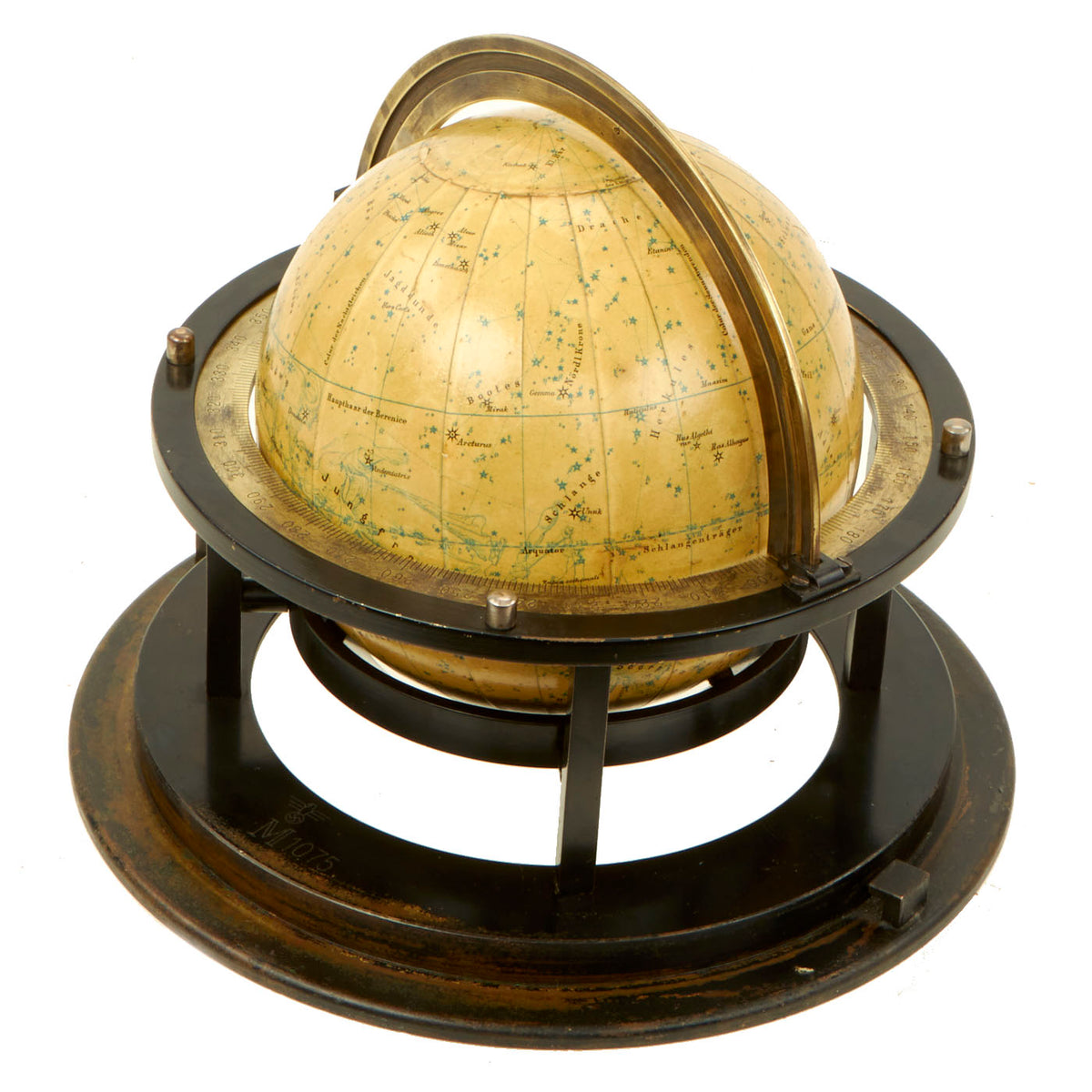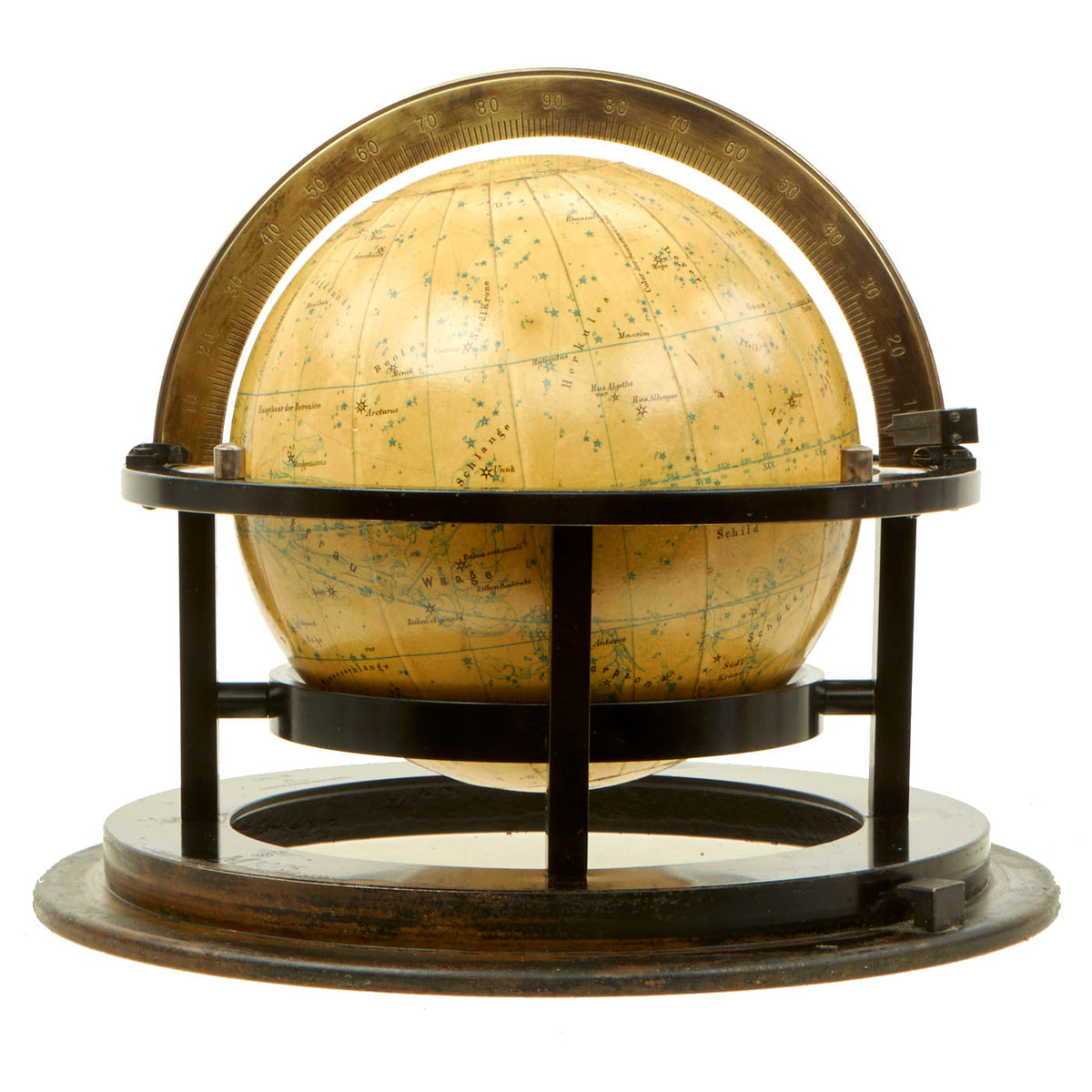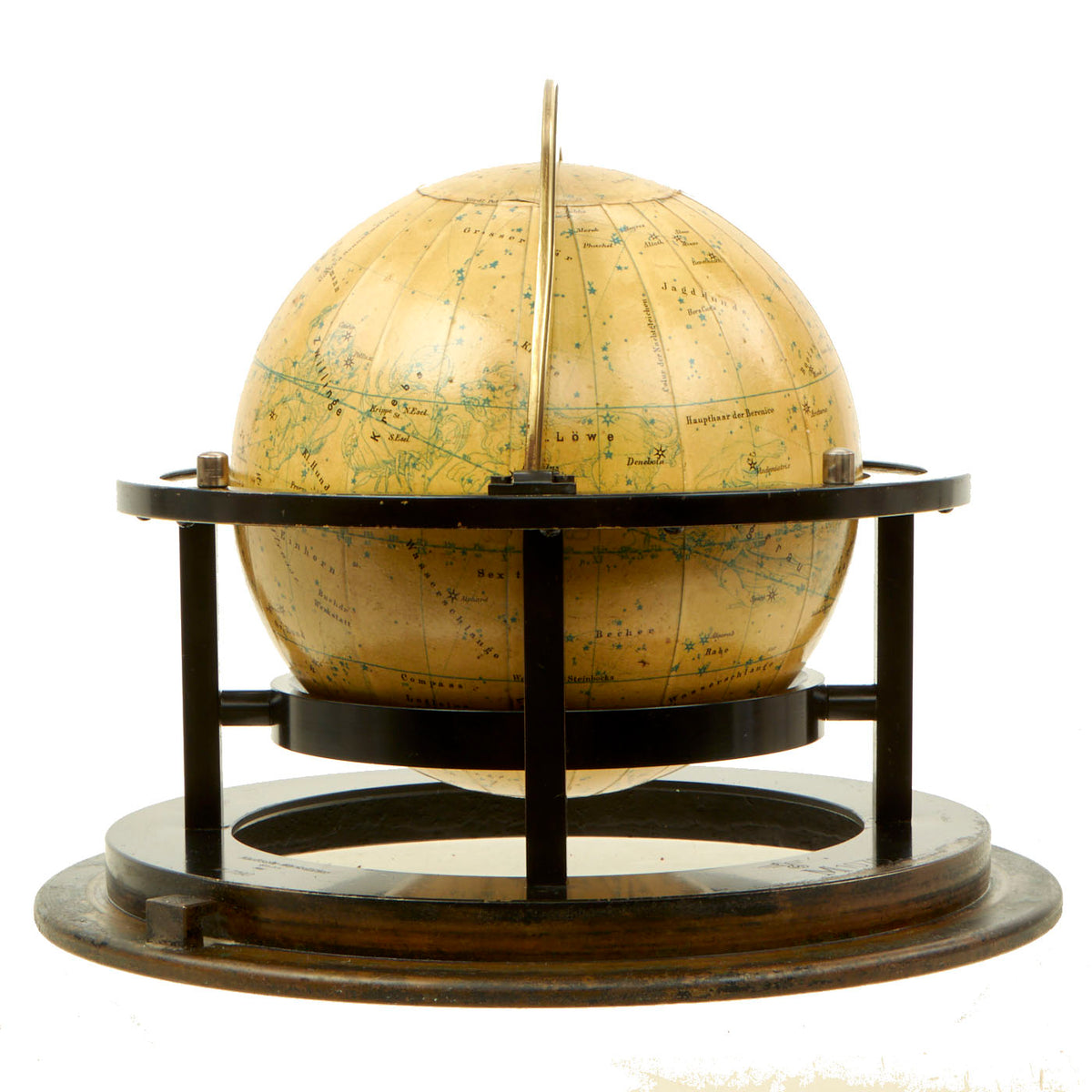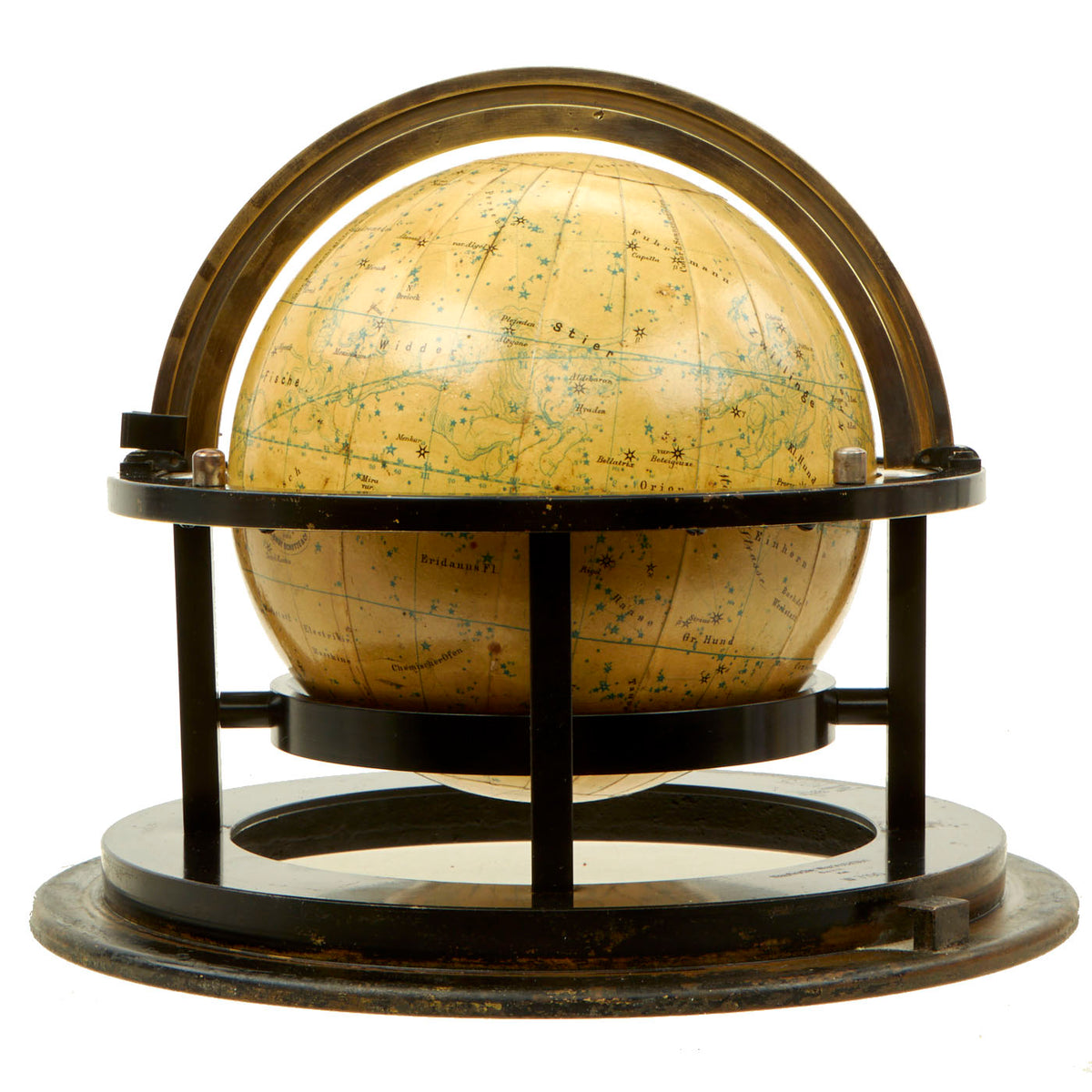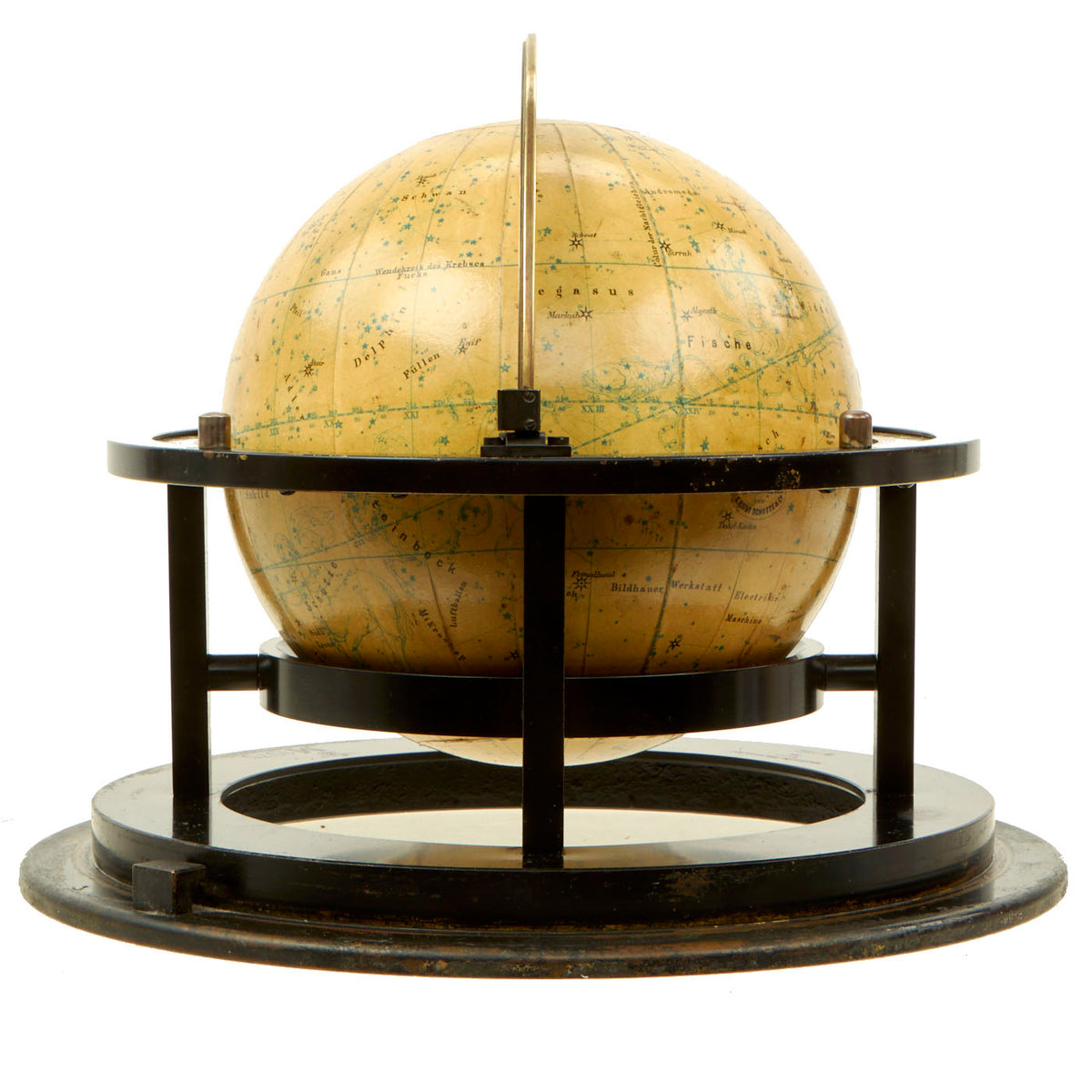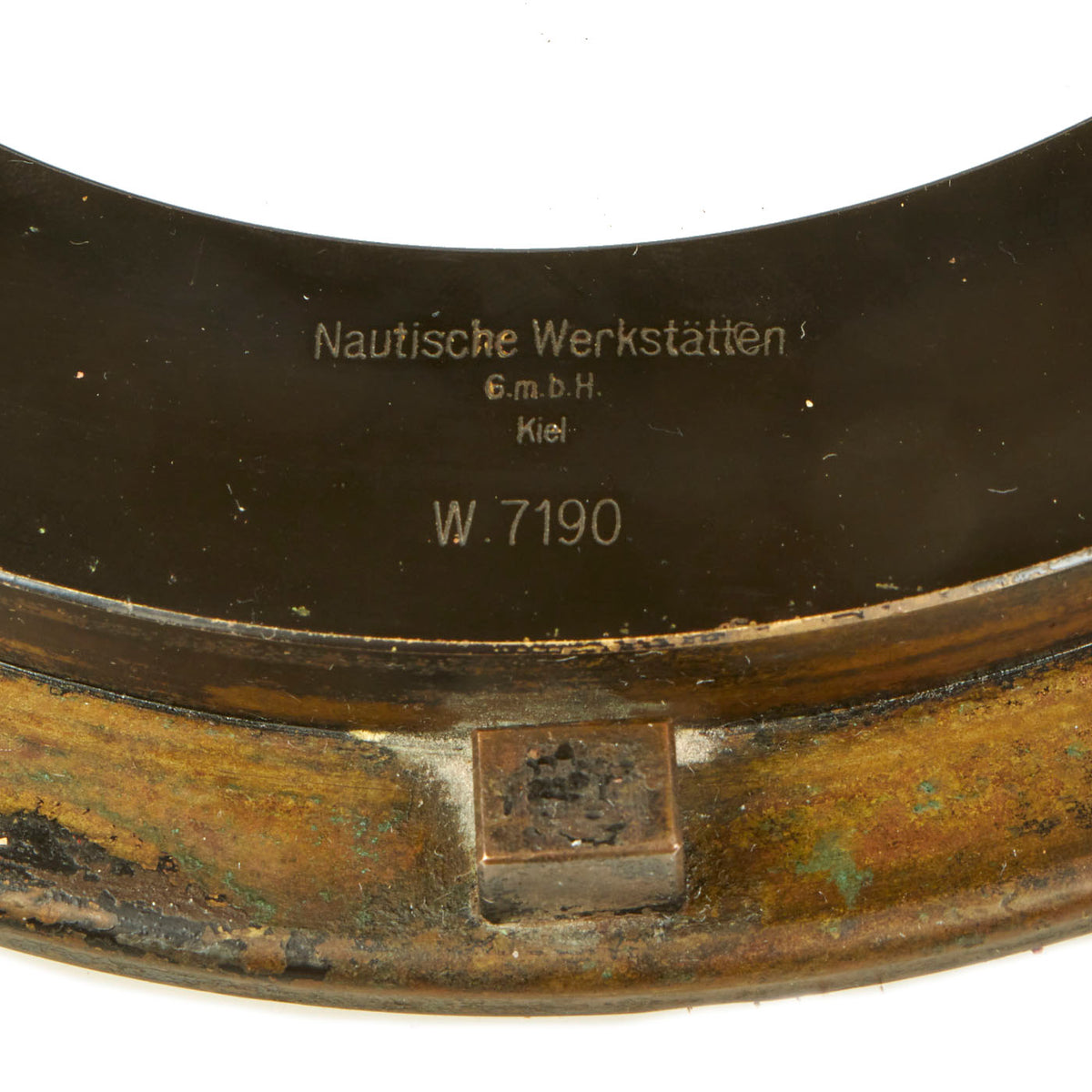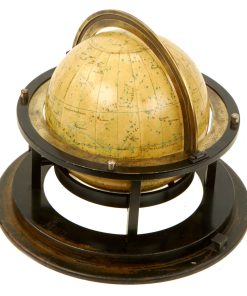Original German WWII Kriegsmarine U-Boat Celestial Navigation Star Globe BY ERNST SCHOTTE & CO – With NSDAP Markings Original Items
$ 4.495,00 $ 1.123,75
Original Item: Only One Available. Incredibly rare WWII German Navy Submarine celestial navigation globe, with maker’s mark. Inscribed: BERLIN Geogr. artist Anstalt von Ernst Schott & Co, the 6½in. diameter globe set within steel calibrated horizon and meridian rings on black painted brass base stamped 1075 next to the Waffenamt over M used to identify items made for the German Navy or Kriegsmarine, with deck-securing lugs (globe dented, some discoloration, some markings deleted from base) — 9in. (23cm.) high.
The base is also maker marked as well:
Nautische Werkstätten
G.m.b.H.
Kiel
W. 7190
Kiel is a major German port city on the Baltic Sea, home to many ship builders and associated companies.
An invaluable tool for U-Boat crews, who normally would surface at night when the threat of being spotted by Allied aircraft and seagoing vessels was minimal, this Celestial Globe allowed the crews to navigate as sailors had for centuries previous; by using the stars above them.
Considering the high attrition rate of German U-Boats as the war went on, most of these Kriegsmarine Celestial Globes ended up at the bottom of the sea. With very few in existence today, this unique WWII nautical artifact is a very rare find indeed.
Celestial Globes
Celestial globes show the apparent positions of the stars in the sky. They omit the Sun, Moon, and planets because the positions of these bodies vary relative to those of the stars, but the ecliptic, along which the Sun moves, is indicated.
There is an issue regarding the “handedness” of celestial globes. If the globe is constructed so that the stars are in the positions they actually occupy on the imaginary celestial sphere, then the star field will appear reversed on the surface of the globe (all the constellations will appear as their mirror images). This is because the view from Earth, positioned at the centre of the celestial sphere, is of the gnomonic projection inside of the celestial sphere, whereas the celestial globe is orthographic projection as viewed from the outside. For this reason, celestial globes are often produced in mirror image, so that at least the constellations appear as viewed from earth. Some modern celestial globes address this problem by making the surface of the globe transparent. The stars can then be placed in their proper positions and viewed through the globe, so that the view is of the inside of the celestial sphere. However, the proper position from which to view the sphere would be from its centre, but the viewer of a transparent globe must be outside it, far from its centre. Viewing the inside of the sphere from the outside, through its transparent surface, produces serious distortions. Opaque celestial globes that are made with the constellations correctly placed, so they appear as mirror images when directly viewed from outside the globe, are often viewed in a mirror, so the constellations have their familiar appearances. Written material on the globe, e.g. constellation names, is printed in reverse, so it can easily be read in the mirror.
Before Copernicus’s 16th century discovery that the solar system is ‘heliocentric rather than geocentric and geostatic’ (that the earth orbits the sun and not the other way around) ‘the stars have been commonly, though perhaps not universally, perceived as though attached to the inside of a hollow sphere enclosing and rotating about the earth’. Working under the incorrect assumption that the cosmos was geocentric the second century Greek astronomer Ptolemy composed the Almagest in which ‘the movements of the planets could be accurately represented by means of techniques involving the use of epicycles, deferents, eccentrics (whereby planetary motion is conceived as circular with respect to a point displaced from Earth), and equants (a device that posits a constant angular rate of rotation with respect to a point displaced from Earth)’. Guided by these ideas astronomers of the middle ages, Muslim and Christian alike, created celestial globes to ‘represent in a model the arrangement and movement of the stars’. In their most basic form celestial globes represent the stars as if the viewer were looking down upon the sky as a globe that surrounds the earth.
Fast Shipping with Professional Packaging
Thanks to our longstanding association with UPS FedEx DHL, and other major international carriers, we are able to provide a range of shipping options. Our warehouse staff is expertly trained and will wrap your products according to our exact and precise specifications. Prior to shipping, your goods will be thoroughly examined and securely secured. We ship to thousands clients each day across multiple countries. This shows how we're dedicated to be the largest retailer on the internet. Warehouses and distribution centres can be located throughout Europe as well as the USA.
Note: Orders with more than one item will be assigned a processing date depending on the item.
Before shipping before shipping, we'll conduct a thorough inspection of the items you have ordered. Today, the majority of orders will be delivered within 48 hours. The delivery time will be between 3-7 days.
Returns
The stock is dynamic and we cannot completely manage it because multiple stakeholders are involved, including our factory and warehouse. So the actual stock may alter at any time. It's possible that you may not receive your order once the order has been made.
Our policy is valid for a period of 30 days. If you don't receive the product within 30 days, we are not able to issue a refund or an exchange.
You can only return an item if it is unused and in the same state as the day you received it. You must have the item in its original packaging.
Related products
Uncategorized
Uncategorized
Armored Burgonet Helmet & Polearm from Scottish Castle Leith Hall Circa 1700 Original Items
Uncategorized
Armoured Fighting Vehicles of the World: AFVs of World War One (Hardcover Book) New Made Items
Uncategorized
Uncategorized
Uncategorized
Uncategorized
Uncategorized
Uncategorized
Uncategorized
Uncategorized
Uncategorized
Uncategorized
Uncategorized
Uncategorized
Uncategorized
Uncategorized
Uncategorized
